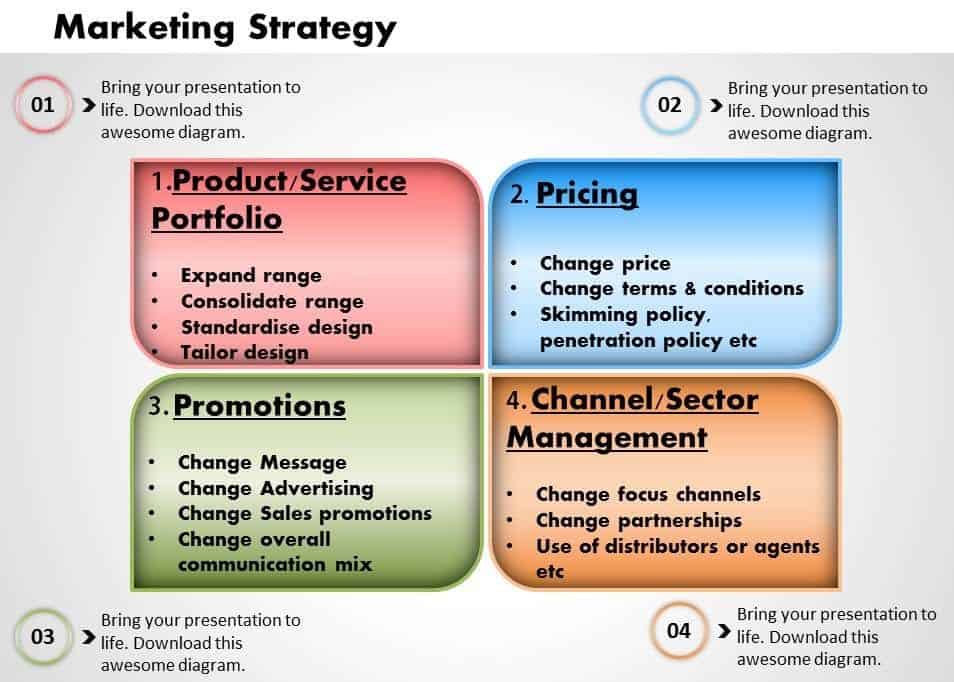Estimated reading time: 10 minutes
Let’s demystify product marketing.
It’s not about sales alone – it’s first about your product, then about how and where you choose to market and promote your product, or service. Some call it, the marketing mix. The 4Ps of marketing.
In his book, The Founder’s Dilemma, Noam Wasserman opines that Founders‘ attachment, overconfidence, and naïveté may be necessary to get new ventures up and running, but these emotions later create problems. Overconfidence in most founders has led to the downfall of their businesses.
Most entrepreneurs jump right into launching products without plans such as a product’s marketing strategy. Some entrepreneurs and companies to date, still believe that marketing isn’t for everybody. They follow their belief in their idea of what their business is about and backed up by plenty of motivation, and they expect it to succeed against all odds.
Suggested Read: Product Development For Small Businesses
Imagine this scenario; a new fashion brand decides to launch a clothing line. Great idea! The product team invests its energy, time and resources to ensure they release the product on the date expected.
Three months later, the product goes live. The company organises an event to celebrate; as glasses of wine chinks together, there are exciting and congratulatory whispers with laughter spurts all over. …but no one amongst the celebrating crowd was interested in the product; the product never did kick-off, as it was not a fit for the chosen crowd.
Why?
Contents
First Things First
The product marketing team failed to properly consider the Product, and how best to Position it in the minds of its prospective buyers and effectively Promote it, at the right Place where the buyers could be reached.
The chosen crowd had no desire to buy the product – It probably did not ease any of their pain points. This is why businesses need product marketing. Small companies need product marketing because it helps them position their products or services, in such ways that they might effectively promote them and sell them.
READ: Product Development for Small businesses
Table of contents
- First Things First
- What is Product Marketing?
- 5 Essential Reasons Why You Need Product Marketing
- 2. Product marketing helps provide data that can help in targeting your buyer personas effectively:
- 3. Product marketing helps you to learn about your competitors (products and marketing tactics):
- 4. It helps to position the product appropriately in the market:
- 5. Product marketing helps in setting the price for your products:
- Understanding Product Marketing Strategy
- Vision
- Insights
- How To Optimise Your Product Marketing Strategy
- External Aspects of a Product Launch
- Final Thoughts
What is Product Marketing?

Though most people mistake marketing with sales or promotion, there is no one generally accepted definition of product marketing. Every expert tries to define it based on their personal experiences while practising it. Yet, every description seems to bring together the relationship between the product, the promotion, and the customer. It is safe to describe product marketing as that aspect of marketing that deals with acquiring the right buyers or customers for a product and creating an appealing pitch to these customers.
Product Marketing helps to develop positioning, messaging, competitive differentiation. It uses a combination of research, design, and advertising that leads to its success.
Product marketing, therefore, is at the very heartbeat of product development. If you get your marketing right enough, you could actually generate enough momentum for your product, even while it is being developed.
5 Essential Reasons Why You Need Product Marketing
Your business won’t achieve its goals among your target audience if you do not have a product marketing strategy. The benefits of product marketing in companies are valuable.
1. Product marketing provides insights that help you to understand your customers better
This employs the use of both the qualitative and quantitative approaches in gathering market and customer insights. These insights are necessary for growing small businesses because marketing an unknown product to your customers is suicidal to the business’s success. Understanding customer insights helps to inform positioning and messaging. It exposes what market needs are and helps strategise sales and ensure closures.
2. Product marketing helps provide data that can help in targeting your buyer personas effectively:
After understanding who your customers are, product marketing also provides insights into the persona of their character or interests. It helps you determine their behaviours and what they want so that if you’re launching a new product, you can be guided into what they want.
3. Product marketing helps you to learn about your competitors (products and marketing tactics):
The competitive landscape is an area you should not be ignorant of. Product marketing ensures that you take account of what others are doing in the industry. This information helps you understand your market dynamics.
4. It helps to position the product appropriately in the market:
After a comprehensive understanding of the target market, product marketing helps provide its benefits to the target market. Through their insights, it gets easier to know what products appeal to them. This information also enables you to streamline marketing efforts in creating useful marketing messages that drive sales.
5. Product marketing helps in setting the price for your products:
Pricing of products in the market depends on how you position your business. Is your product a premium product or service? Using your customer data and their personas, it gets easier to determine the products they can afford.
Understanding Product Marketing Strategy

Every new product launch requires a product marketing strategy, which serves as a guide towards the positioning, pricing, and promotion of the new product. These are the detailed steps of actions you must take from the product’s development to its launch. This process is necessary for your product’s success and helps inform the customers about the product. You need to advertise and tell them about your activities at every step of the way.
A product marketing strategy usually considers the following components.
Vision
Your organisation’s vision determines what your product will be. The idea will feed the development of the product and fan the excitement of your audience. A common problem that may result when your idea and product aren’t in similitude to one another, your customers will always be taken by surprise. You might eventually lose them shorter than expected because your vision outlines what they need. Your product is the solution to those needs.
Insights
These are the information you need to turn your vision into reality. The data required to make your vision of satisfying the needs of your customer to come alive. These are categorised into three, and they include;
Your Competitors: These are the similar companies that are into the same industry as you. You have to identify their services, mode of operation, uniqueness, their customers, and reviews.
Your Customers: These are the people you want to buy from you. You have to identify who they are, pain points, personas, demographic and psychographic traits, buying patterns. This valuable data can be used to predict what kind of products will interest them in the future.
Your Market Position: This connotes your unique selling point, your values, your strengths and weaknesses.
How To Optimise Your Product Marketing Strategy
How Your Businesses Can Best Position, Promote And Sell Their Products And Services.
For example, if our fashion brand decides to do things better. Here are steps we can use to turn our small business around for the better.
1. Market Analysis
Before you decide to develop your product as a small business owner is market research. Assuming our fashion brand wants to create a line of shorts for the customers, they must carry out market research. This research will determine the viability of shorts in the market in consideration of the business environment, the customer purchasing habits and the market competitors.
The market analysis focuses on three primary areas including,
Market Research: This is an essential aspect of product marketing that allows you to understand your customers’ needs and establish the kinds of products they already use. It includes both primary and secondary research.
Competitors analysis: This allows you to list other businesses in your industry and observe what they are doing and how they satisfy their customer’s needs.
Build a SWOT analysis grid: This allows you to make a grid of your strengths, weaknesses, opportunities and threats as you plan on launching your new product.
2. Describe your Target Audience and Buyer’s Persona
After the market research, the next step is to identify the target audience. You can create a buyer persona from the information collected during the market analysis. Understanding who they are will help your success tremendously. Having an experience of your customer’s buyer’s persona means you have clearly identified their needs, pain points. This will help to ensure that all aspects of your product marketing strategy are successful.
3.Identify your brand or company’s positioning and messaging
The determination of your target audience and user’s persona will give you information about their interests, identifying the products that best align with their needs. This step enables you to assess your product’s different ways, solves your customer’s needs, and sets your product apart through positioning. Positioning and messaging answers the key questions customers have about your company and your product. This helps in crafting promotional campaigns to be used on different levels.
4. Set SMART goals for your product
The next step after identifying your brand position and message is to set SMART goals. This goal is what you want your product to achieve. It might be for brand awareness, increasing revenue, driving engagement with customers and many more.
SEE: 7 Ways You Can create an Effective Business Strategy
5. Set your product price
Do you understand the dynamics to why two fashion wristwatches probably look alike with similar features but have different prices? One is way higher than the other. It depends on the business models set in place and its strategies when setting up the product. There are basically two pricing strategies which are Competitive and Value-based pricing.
SEE: Price and it’s Place in Marketing
6. Launching your product
These describe the processes you undergo to launch the product you’ve been marketing. In product marketing, two parts of the launch should be considered—the internal and external launch.
Internal launch: your team should be updated about what’s going on in the company. They should have a general idea of what your product is about, the benefits, pricing, sales training and opportunities of your product, the target audience and the features of your product. Hence, this will help in ensuring consistency in the kind of information that passes to the customers.
External Aspects of a Product Launch
This entails the processes adopted to market the product that your customers and target audience learn about during product development. It’s best to keep them well informed at every step of the way because it builds up a surge of excitement in them as they anticipate your product launch.
There are different areas through which you can use to focus your marketing efforts. These could be social media, blogs, website landing pages, Youtube videos, complete product review before the official launch etc.
It is alright to choose more than one channel for focusing market efforts, but ensure that they meet fit perfectly for targeting your buyers. Your message must be unmistakable and should incorporate all you need your customers to know, including the features, benefits, pricing, and what makes it unique.
Final Thoughts
The role of product marketing should not be misunderstood. Some people believe that when a great product has been created, it markets itself. Asides from the fact that this is untrue, it is a claim made through ignorance. No matter how great a product is, it will never sell if there isn’t a strategy before and after its launch.
So marketing is an integral part of the success of a product’s lifecycle.
Suggested Articles:
























gildpau b0da67c006 https://marketplace.visualstudio.com/items?itemName=robiiard.Autodesk-Maya-2016-Crack-Universal-Product-Key-Free-marcglo
Waiting patiently for you to come home and fuck me! https://bit.ly/3UIKI2R
Waiting patiently for you to come home and fuck me! https://bit.ly/3UIKI2R
Waiting patiently for you to come home and fuck me! https://bit.ly/3UIKI2R
Waiting patiently for you to come home and fuck me! https://bit.ly/3UKFVxa